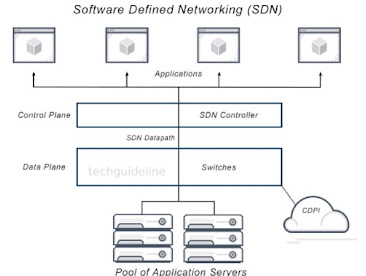Virtual Local Area Network
Virtual Local Area Network or Virtual LANs (VLANs) are a logical group of computers that appear to be on the same LAN irrespective of the configuration of the underlying physical network. Network administrators partition the networks to match the functional requirements of the VLANs so that each VLAN comprises a subset of ports on a single or multiple switches or bridges. This allows computers and devices in a VLAN to communicate in the simulated environment as if it is a separate LAN.
VLAN is a custom network that is created from one or more
local area networks. It enables a group of devices available in multiple
networks to be combined into one logical network. The result becomes a virtual
LAN is administered like a physical LAN. The full form of VLAN is defined
as Virtual Local Area Network. The below topology depicts a network having all hosts inside the same virtual LAN.
Without VLANs, a broadcast sent from a host can easily reach all
network devices. Each and every device will process broadcast received frames.
It can increase the CPU overhead on each device and reduce the overall network
security.
In case if you place interfaces on both switches into a separate virtual local area network, a
broadcast from host A can reach only devices available inside the same VLAN.
Hosts of VLANs will not even be aware that the communication took place. VLAN in networking is a virtual extension of LAN. A
LAN is a group of computer and peripheral devices which are connected in a
limited area such as school, laboratory, home, and office building. It is a
widely useful network for sharing resources like files, printers, games, and
other applications.




Comments
Post a Comment